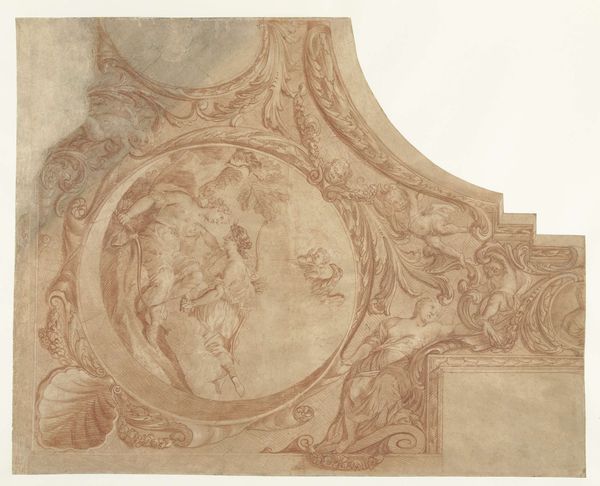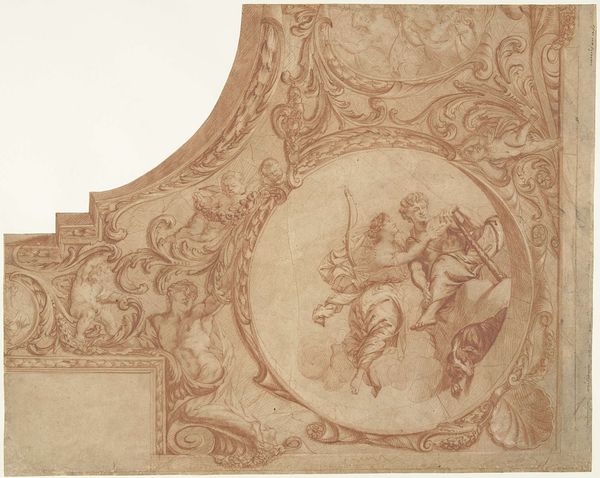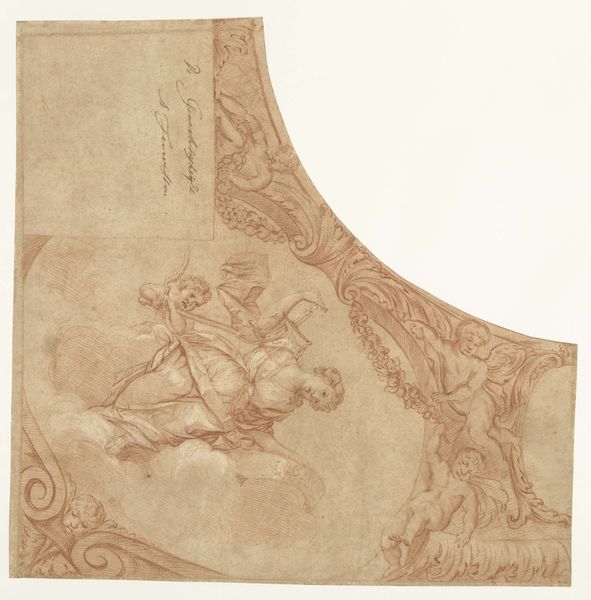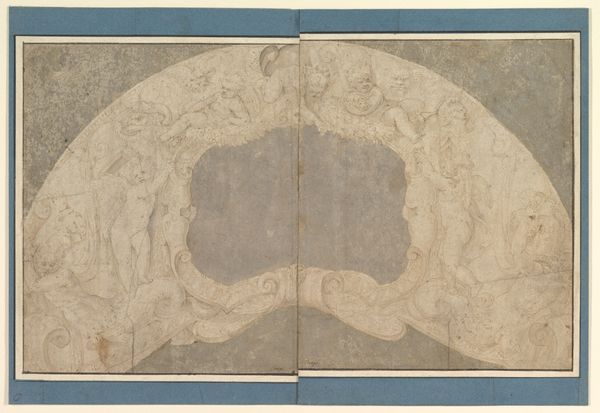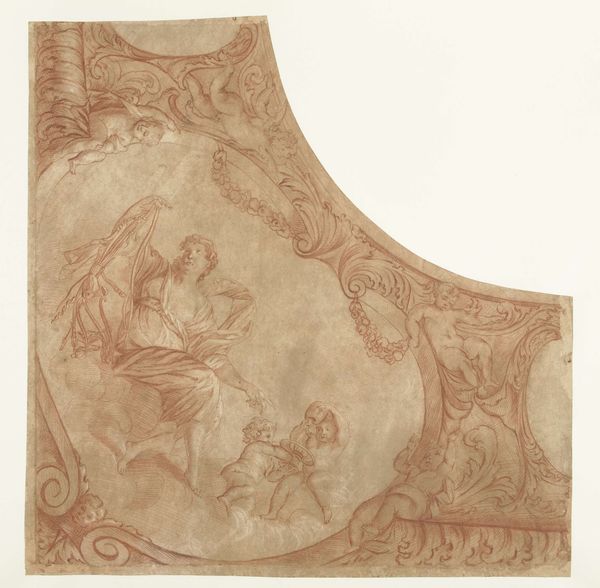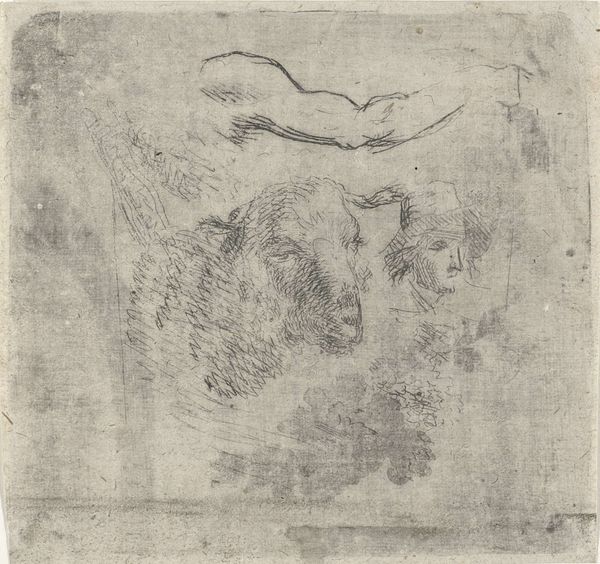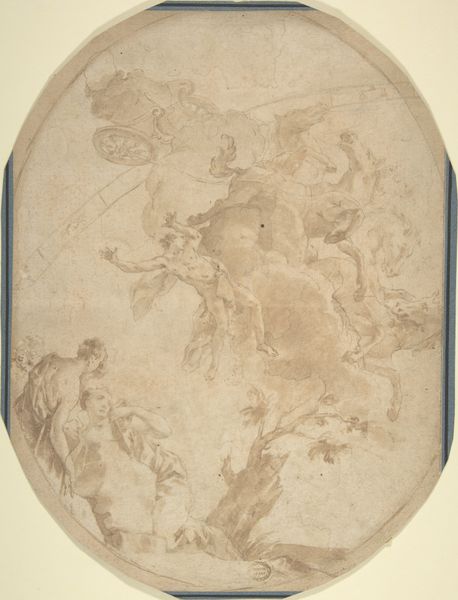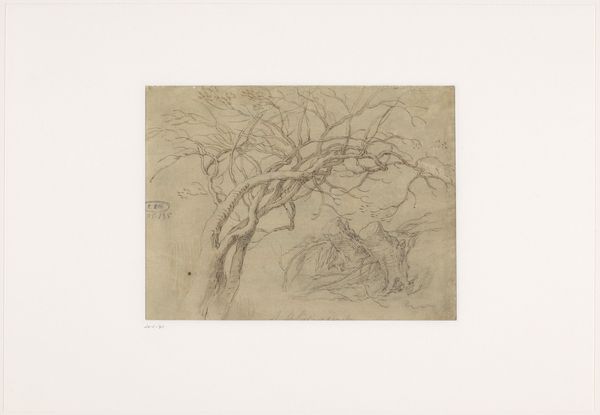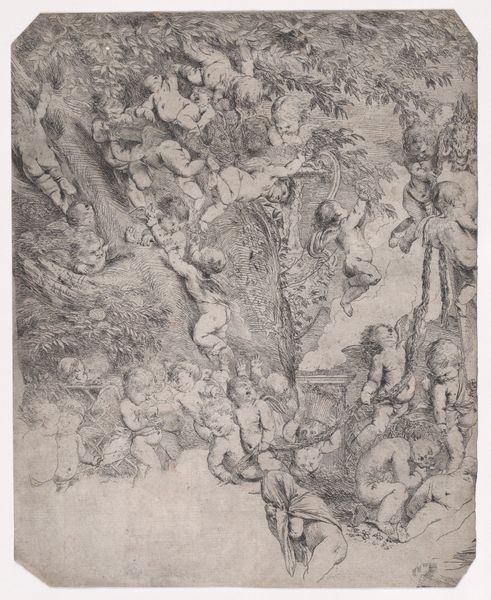
Ontwerp voor een hoekstuk van plafond met personificatie van de Zuivere Waarheid 1680 - 1757
0:00
0:00
drawing, pen
#
pencil drawn
#
drawing
#
allegory
#
baroque
#
charcoal drawing
#
figuration
#
pencil drawing
#
pen
Dimensions: height 471 mm, width 466 mm
Copyright: Rijks Museum: Open Domain
Mattheus Terwesten made this design for a ceiling in pen and brown ink around the turn of the 18th century. The medium itself speaks to the function of this artwork, as a preliminary sketch. Pen and ink drawings like these were crucial for architects, interior designers and other tradesmen who decorated the homes of wealthy patrons. The fluidity of the ink allowed Terwesten to freely develop his ideas on paper. Note the way the brown ink allows for shading and depth, creating a sense of three-dimensionality despite being a two-dimensional drawing. This technical skill in rendering form was essential, especially in the context of ceiling decorations, where perspective and illusion played a vital role. Consider the labor involved in creating such a detailed design, and the specialized skills required. Terwesten's drawing exemplifies how these seemingly simple materials of pen and ink allowed artisans to realize the grand visions of their patrons, shaping the aesthetic experiences of their homes.
Comments
No comments
Be the first to comment and join the conversation on the ultimate creative platform.


